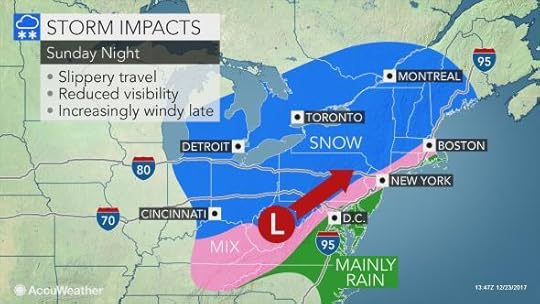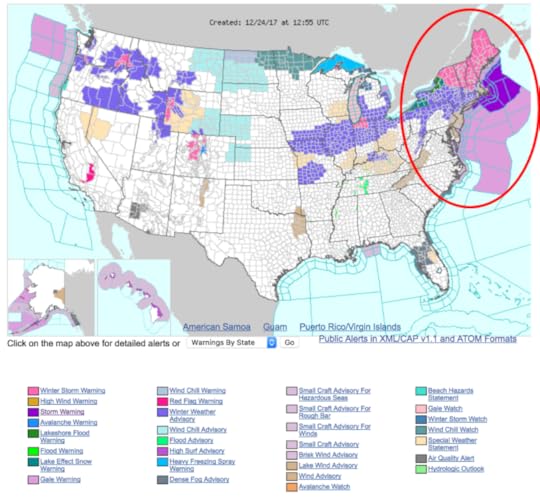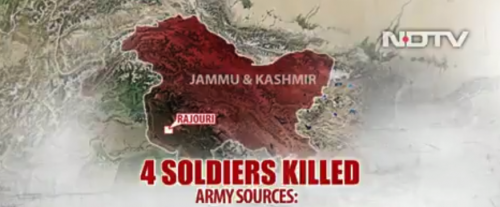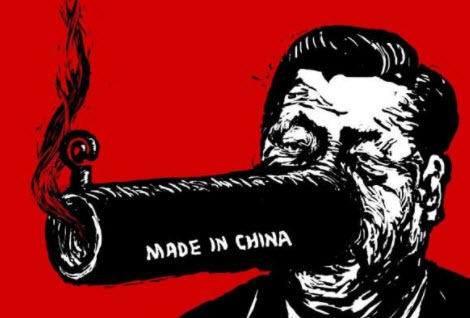Steve Bull's Blog, page 1222
December 27, 2017
Book Review: Food Scarcity. Unavoidable by 2100?
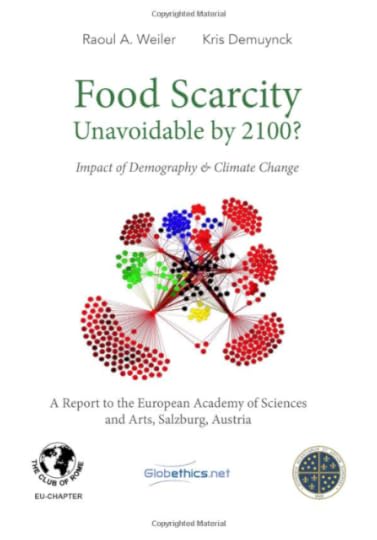
This is an excerpt from the review by Ugo Bardi published on the “Journal of Population and Sustainability“
Scientific studies that examine the food supply and its correlation to human population have a long tradition that goes back to Thomas Malthus and his “An Essay on the Future of Population“ of 1798. From then on, the field has remained politically charged. Still today, Malthus is often dismissed as a doomsday prophet whose apocalyptic predictions turned out to be wrong. But Malthus lacked the modern concept of “overshoot and collapse” and he never predicted the kind of population crashes that we associate to modern famines.
Another study often accused of having been overly catastrophistic in terms of the future of the human population is the report to the Club of Rome titled “The Limits to Growth”, published in its first version in 1972. This is also a misinterpretation, since none of the several scenarios reported in 1972 foresaw a population decline before entering the second half of the 21st century.
In analogy with the first report to the Club of Rome, the recent book by Weiler and Demuynck, “Food Scarcity” approaches an old problem with a new methodology. While “The Limits to Growth” was one of the first studies to apply system dynamics to the study of the economy, “Food Scarcity” is among the first studies that applies the modern network theory to the world’s food system. The resulting book, “Food Scarcity,” is an ambitious attempt to pack an enormous amount of material into just 150 pages. It starts with a review of the situation of the world’s food supply with extensive data on the different climate systems, cultivation technologies, geographical conditions, and more.
…click on the above link to read the rest of the article…
How To House the Whole Family in a SHTF-Emergency
 One of the complications of a major disaster event taking place (with or without warning) is not having supplies and equipment before the event takes place. In line with this dearth is the shortage of preparations for members of the family who live in other locations who may wish to band together. I’m going to propose a solution here that is slightly “unconventional,” so try to remove your mind from the constructs imposed upon it by your entire life spent from the army of skeptics and closed-minded establishment mindsets.
One of the complications of a major disaster event taking place (with or without warning) is not having supplies and equipment before the event takes place. In line with this dearth is the shortage of preparations for members of the family who live in other locations who may wish to band together. I’m going to propose a solution here that is slightly “unconventional,” so try to remove your mind from the constructs imposed upon it by your entire life spent from the army of skeptics and closed-minded establishment mindsets.
The imposition is that we all are channeled to live in “cookie-cutter” houses, plopped down akin to so many Hershey kisses in a row: identical construction in an approved, regulated, homeowner’s association-sanctioned manner.
We’re referring to the end of the society, and if you’re a multi-millionaire and you want a house for each member of the family retreating to your location, more power to you. We do what we can in life, and do the best we can. In the absence of millions, there is another route. Let’s go over the basics first.
The principle is for all the family members (and anyone close to that family) having a place to meet up and reside together when it all falls apart. From a logistics perspective, unless you have a gigantic manorial-type residence, your space and resources will be stretched thin. What I propose here are sheds…cabins, if you prefer. You can build them yourself or you can buy them.
Once again, much of this is going to depend on the geographic location you reside, and the social and legal impositions placed upon you. Only you know them. Armies of bureaucrats who want to tax you into insolvency are behind the hordes of conformists (commonly labeled as homeowners’ associations) and “friendly” neighbors who wish to impose their wills upon you.
…click on the above link to read the rest of the article…
Intelligence Insider Warns Of Imminent War: “Likely In The Next 12 Weeks… The Director Of The CIA Told Me”
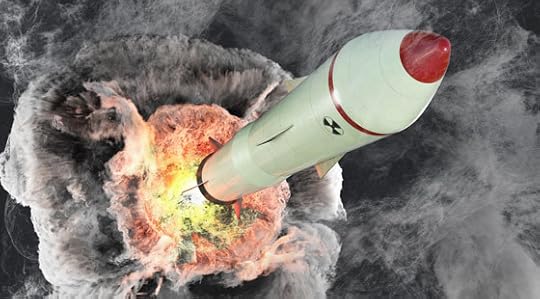
Having worked closely with U.S. intelligence agencies over the last two decades, James Rickards was once asked to simulate asymmetric economic attacks on the U.S. financial system. He is an expert at escalation scenarios and end games, and in a recent article at The Daily Reckoning he warns that the geopolitical situation on the Korean Peninsula will soon come to a head.
According to Rickards, author of The Road To Ruin: The Global Elites Secret Plan For The Next Financial Crisis, while the world concerns itself with stock bubbles, bitcoin and debt, the most imminent threat we face is military confrontation with North Korea.
And while the rogue state has been an ongoing threat for many years, the first half of 2018 will likely see the trigger that sets the whole powder keg off:
The most important financial or geopolitical issue in the world today is a coming war between the U.S. and North Korea, probably in the next twelve weeks.
How can I be so sure about the timing? The Director of the Central Intelligence Agency told me.
In a private conclave in Washington DC on October 20, 2017, CIA Director Mike Pompeo told a small think tank group (including me) that it would be imprudent to assume it would take North Korea more than ‘five months’ to have a reliable arsenal of nuclear-armed ICBM missiles. These could strike U.S. cities and kill millions of Americans.
Five months from October 20, 2017 is March 20, 2018. That’s an outside date but the war will likely begin before then.
That would create an element of surprise — and avoid the surprise of a faster than expected deployment of strategic weapons by North Korean leader Kim Jong Un.
Source: The Daily Reckoning via Survival and Prosperity
…click on the above link to read the rest of the article…
THE U.S. SHALE OIL INDUSTRY: Swindling & Stealing Energy To Stay Alive
While the U.S. Shale Energy Industry continues to borrow money to produce uneconomical oil and gas, there is another important phenomenon that is not understood by the analyst community. The critical factor overlooked by the media is the fact that the U.S. shale industry is swindling and stealing energy from other areas to stay alive. Let me explain.
First, let’s take a look at some interesting graphs done by the Bloomberg Gadfly. The first chart below shows how the U.S. shale industry continues to burn through investor cash regardless of $100 or $50 oil prices:

The chart above shows the negative free cash flow for 33 shale-weighted E&P companies. Even at $100 oil prices in 2012 and 2013, these companies spent more money producing shale energy in the top four U.S. shale fields than they made from operations. While costs to produce shale oil and gas came down in 2015 and 2016 (due to lower energy input prices), these companies still spent more money than they made. As we can see, the Permian basin (in black) gets the first place award for losing the most money in the group.
Now, burning through investor money to produce low-quality, subpar oil is only part of the story. The shale energy companies utilized another tactic to bring in additional funds from the POOR SLOBS in the retail investment community… it’s called equity issuance. This next chart reveals the annual equity issuance by the U.S. E&P companies:

According to the information in the chart, the U.S. E&P companies will have raised over $100 billion between 2012 and 2017 by issuing new stock to investors. If we add up the funds borrowed by the U.S. E&P companies (negative free cash flow), plus the stock issuance, we have the following chart:

…click on the above link to read the rest of the article…
December 24, 2017
Northeast Forecast To Get Big Winter Blast
Three days ago, we asked: Is A Major Winter Blast Coming To The East Coast This Christmas? Despite all the chatter from global warming alarmists this year, there is a chance, some in the Northeast could experience a white Christmas.
Ed Vallee, a private weather forecaster based in Connecticut, reports merging storms will spread snow, rain, and mixed conditions from the central Appalachians to New England. The system will start on Sunday night and continue into Monday. Snow totals are forecasted to bring 2-8″ for parts of the Northeast (shown below).
Vallee discusses the risks associated with the storm, along with more details into the timing of this system.
AccuWeather Senior Meteorologist Brett Anderson, confirms Vallee’s forecast and said, there will be “enough snow to shovel and plow is likely from western and northern Pennsylvania and southern Ontario to Maine, New Brunswick, and Nova Scotia.”
Here are the highways that could be heavily impacted by the storm include Interstate 70, I-76, I-78, I-80, I-81, I-84, I-86, I-87, I-88, I-89, I-90, I-91, I-93, I-95, and I-390. AccuWeather’s team expects delays at airports in Pittsburgh, New York City, and Boston.
Also, the National Weather Service has issued a deluge of winter weather advisories and warnings for the Northeast (as of 12-24).
The National Oceanic and Atmospheric Administration (NOAA) provides an animated Gif depicting the trajectory of the system with the different types of precipitation probabilities. Accuweather sheds more color on the storm:
Accuweather sheds more color on the storm:
From just north and east of Philadelphia to New York City, Providence, Rhode Island, and New Bedford, Massachusetts, just enough snow may fall to cover the ground, just in time for a White Christmas.
Farther south and west from Atlantic City, New Jersey to Baltimore and Salisbury, Maryland, and Washington, D.C., little or no snow is likely. Little or no rain may fall as well due to a gap in the storm.
…click on the above link to read the rest of the article…
North Korea Declares New Sanctions An ‘Act Of War,’ Refuses To Ever Abandon Its Nukes
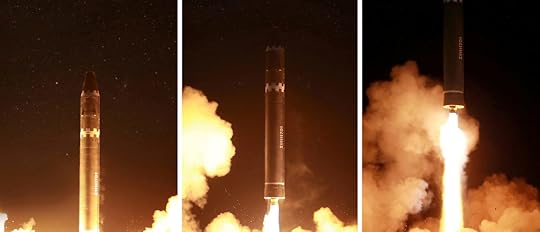
North Korea Declares New Sanctions An ‘Act Of War,’ Refuses To Ever Abandon Its Nukes
North Korea strongly rejected the latest United Nations sanctions resolution, calling it an “act of war” against the rogue regime.
The U.N. Security Council unanimously decided Friday to impose tougher sanctions on North Korea in response to the North’s test of a new intercontinental ballistic missile that some experts suggest can range the entire continental U.S.
Resolution 2397 bans nearly 90 percent of North Korea’s refined petroleum imports and sets new restrictions on other essential imports, such as heavy machinery. The punitive resolution also demands the repatriation of North Korean workers generating funds for the regime abroad and puts greater pressure on North Korean shipping.
“The United States, completely terrified at our accomplishment of the great historic cause of completing the state nuclear force, is getting more and more frenzied in the moves to impose the harshest-ever sanctions and pressure on our country,” North Korea’s state-run Korean Central News Agency saidSunday.
“We define this ‘sanctions resolution’ rigged up by the U.S. and its followers as a grave infringement upon the sovereignty of our Republic, as an act of war violating peace and stability in the Korean peninsula and the region and categorically reject the ‘resolution,’” the report explained.
Pyongyang called on the U.S. and its international partners to “wake up from its pipe dream of our country giving up nuclear weapons” and learn to “co-exist with the country that has nuclear weapons.”
“We will further consolidate our self-defensive nuclear deterrence aimed at fundamentally eradicating the U.S. nuclear threats, blackmail and hostile moves by establishing the practical balance of force with the U.S.,” the state-run outlet further stated.
…click on the above link to read the rest of the article…
Saudi airstrikes kill 48 Yemeni civilians in 24 hours

BEIRUT, LEBANON (5:40 P.M.) – At least 48 Yemeni civilians have been killed by the Saudi Coalition in the last 24 hours, the Saba News Agency reported.
“A total of 48 civilians, including women and children, were killed and wounded in 51 airstrikes launched by US-backed Saudi-led aggression coalition using internationally banned weapons on several Yemeni provinces over the past few hours, military and security officials told Saba on Sunday,” the news agency reported.
The Saudi airstrikes were primarily concentrated on the northern part of the country, where the Houthis is currently controls several provinces.
In addition to northern Yemen, the Saudi airstrikes were also targeted the western part of the country, including the Hodeidah Port that was finally reopened after it was blockaded for several weeks.
Pakistan Opens Fire Along Border Killing Indian Troops, Warns “Nuclear War Cannot Be Ruled Out”
With most of the Western hemisphere on holiday, another crisis appears to be developing on the India–Pakistan border known as the Line of Control (LoC). The incident started on Saturday, where at least four Indian soldiers were killed, in an exchange of fire with the Pakistani Army on the Line of Control (LoC) dividing Kashmir, ABC News reported.
The two sides reportedly exchanged heavy fire in the Keri sector of the Rajouri district, about 222 km southwest of Srinagar city, the summer capital of the Indian state of Jammu and Kashmir.
The skirmish started when Pakistani troops used automatic weapons, small arms, and mortars to attack Indian positions in Shahpur area of J&K’s Poonch district. The Indian army said Pakistani soldiers violated the 2003 cease-fire, calling the attack an “unprovoked cease-fire violation.”
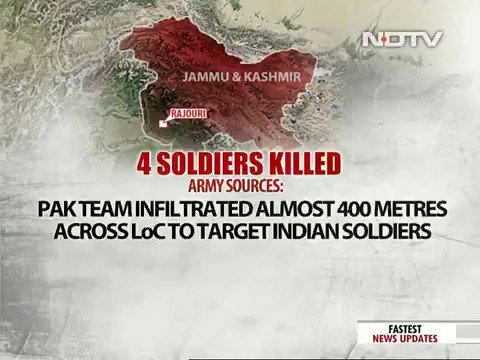
[image error]Asfandyar Bhittani
@BhittaniKhannnn
Indian media is admitting that Pakistan conducted a surgical strike (Not like their bollywood one) in #Rajouri Occupied Kashmir in retaliation to bombardment of villages of Azad Kashmir on LOC by Indian army.
3:54 AM – Dec 24, 2017
A local government official said that the “Pakistani army today resorted to unprovoked firing along the LoC here, killing three troopers and wounding one” He added that “the slain included an officer of the rank of Major.”

[image error]Shiv Aroor
@ShivAroor
Strength to the families of the four Armymen lost today at LoC Keri, Rajouri sector. An incident that sounds like it was more than just a ceasefire violation. RIP, braves.
10:43 AM – Dec 23, 2017
…click on the above link to read the rest of the article…
China Admits To Fake Data (Again) – Hidden Debt & Inflated Revenues
It’s not the first time (and it won’t be the last), but a recent nationwide audit found some local governments inflated revenue levels and raised debt illegally, once again crushing China’s credibility on the global stage when it comes to economic performance.
As Bloomberg reports, ten cities, counties or districts in the Yunnan, Hunan and Jilin provinces, as well as the southwestern city of Chongqing, inflated fiscal revenues by 1.55 billion yuan ($234 million), the National Audit Office said in a statement on its website dated Dec. 8.
The inspection, which covered the third quarter, also found that five cities or counties in the Jiangxi, Shaanxi, Gansu, Hunan and Hainan provinces raised about 6.43 billion yuan in debts by violating rules, such as offering commitment letters.
The findings are a blow to China’s bid to rein in data fraud, which has been widespread in some of the poorer provinces where officials were incentivized to inflate the numbers as a way of advancing their careers.
Concern from investors wanting to be able to trust data out of the world’s second-largest economy led to the government trying to crack down on the practice, with President Xi Jinping saying in March that data fraud “must be throttled,”according to the state-run Xinhua News Agency.
While historically investors would rapidly shrug this news off and buy more stocks, with Chinese sovereign bond yields near their Maginot Line of 4.00%, losing credibility could be critical.
A new supervisory body was set up within China’s statistics office in April to bolster and ensure data authenticity and quality.
The country is also shifting to the latest United Nations-based statistical standard and using computers — rather than local reports — to calculate provincial gross domestic product, the chief economist said in September.
December 23, 2017
The Top 8 Unknowns In 2018’s Energy Markets

It’s that time of year when we flip our calendars to a new start.
For pundits like me, it’s customary to make a listicle about the year to come – the usual predictions about things like OPEC, energy consumption, commodity prices and electric vehicle sales in China. But I decided to fold from that no-win game a while back.
In this age of disruption, there are too many unknowns to honestly predict what will happen next week, let alone 52 of them into the future. So instead of predicting outcomes, I’ve decided to list the top eight unknowns in energy markets for 2018
Collateral disruption– Bringing on energy projects needs a lot of investment. The shakeup of capital markets is inflicting opaque, collateral disruption to the energy business too. Financial technologies are altering fund flows, market liquidity and access to capital. You thought self-driving cars were the only thing that could affect the oil business? How about robo-trading in debt and equity markets? Energy executives now need to be ‘fintech’ experts too.
Bitcoin after-effects– Crypto-currencies like Bitcoin have seemingly little to do with energy, other than using absurd amounts of electricity. But the underlying blockchain technology will be transformative to financing, supplying and consuming primary energy resources. Bitcoin-mania is legitimizing and accelerating blockchain transaction platforms. Be prepared: Yet-to-be-understood changes to the energy business are coming faster than most people think.
Cartel discipline– Some have suggested that North American oil companies should join the OPEC cartel. There is no need. Western investors joined OPEC in the second half of 2017 by restricting equity capital to oil producers. A new “show me your returns, not your production growth” mantra is restraining oil company spending, and therefore the US rig count. But will it be enough to reign in oil output in 2018? And which will crack first when a barrel of WTI oil hits $US 60/B: Investor discipline or OPEC discipline?
…click on the above link to read the rest of the article…



